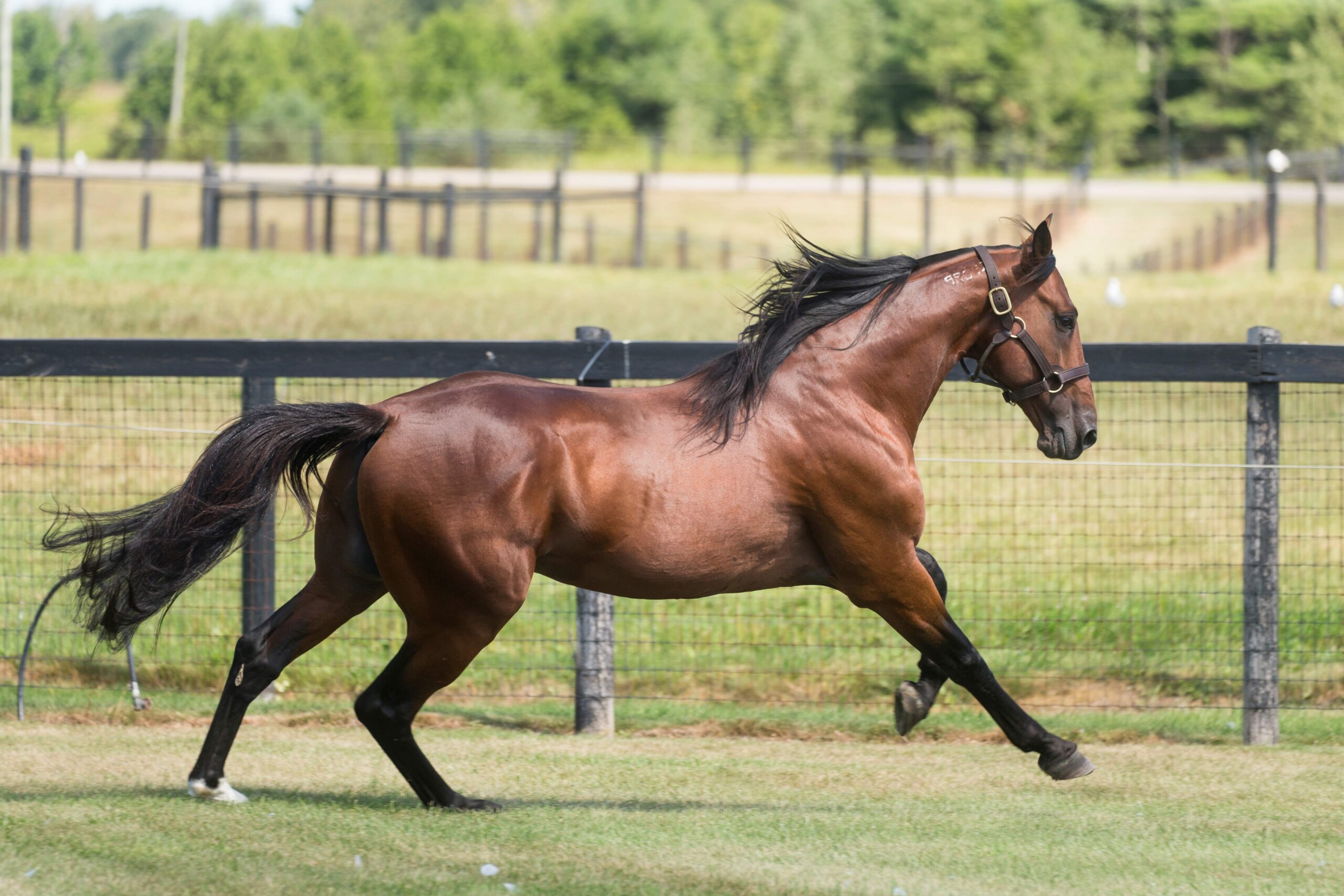U.S. Standardbred breeding titan Joe Thomson said there is a simple reason he’s bullish on producing horses in Ontario.
“Ontario has one of the best programs in North America,” said Thomson, the owner of Winbak Farm that has breeding operations in New York, Pennsylvania, Maryland, Delaware and, yes, Ontario where Winbak is currently leading the Ontario Sires Stakes (OSS) breeders’ list with more than $1.2 million in earnings – more than double the next closest breeder.
In the last nine years, Winbak – which stands nine stallions at the location of the former Armstrong Bros. Farm in Brampton, ON – has been the leading breeder in the OSS program eight times, has surpassed $10 million in total progeny earnings in the program and has exceeded $1 million annually eight times.
Heading into next week’s London Classic Yearling Sale (Oct. 14-15 at the J-AAR Expo Centre at Western Fair District), it’s important to note the OSS program is on solid financial footing for 2026. In 2019, the provincial government signed an agreement that guarantees $10 million annually in funding directly to the province’s Horse Improvement Program (HIP) that supports the OSS, a program that will feature nearly $14 million worth of purses in 2025. Outside of the program, the horse racing industry’s Long Term Funding Agreement (LTFA) with the province, that runs through 2038, injected some $43.5 million, total, into standardbred purses in Ontario in the most recent fiscal year.
Even factoring in the difference in currency between the U.S. and Canadian dollars, Thomson said the OSS program is excellent and worth the investment in Ontario-sired horses.
“If you didn’t have the currency problem, then you’d be killer, but I still think [the OSS] is the best,” he said. “And you know, if you stay in Canada and use Canadian people and use Canadian resources and so forth, then it all works its way out. So, if you win races and you leave the money up there to operate, it’s good for Canada, it’s good for the guy that’s doing it, and he’s operating in one of the best programs.”
There are other reasons Thomson has enjoyed doing business in Ontario for nearly a quarter century.
“We’ve always had good relationships with Canadians,” Thomson said. “They love to have horses.”
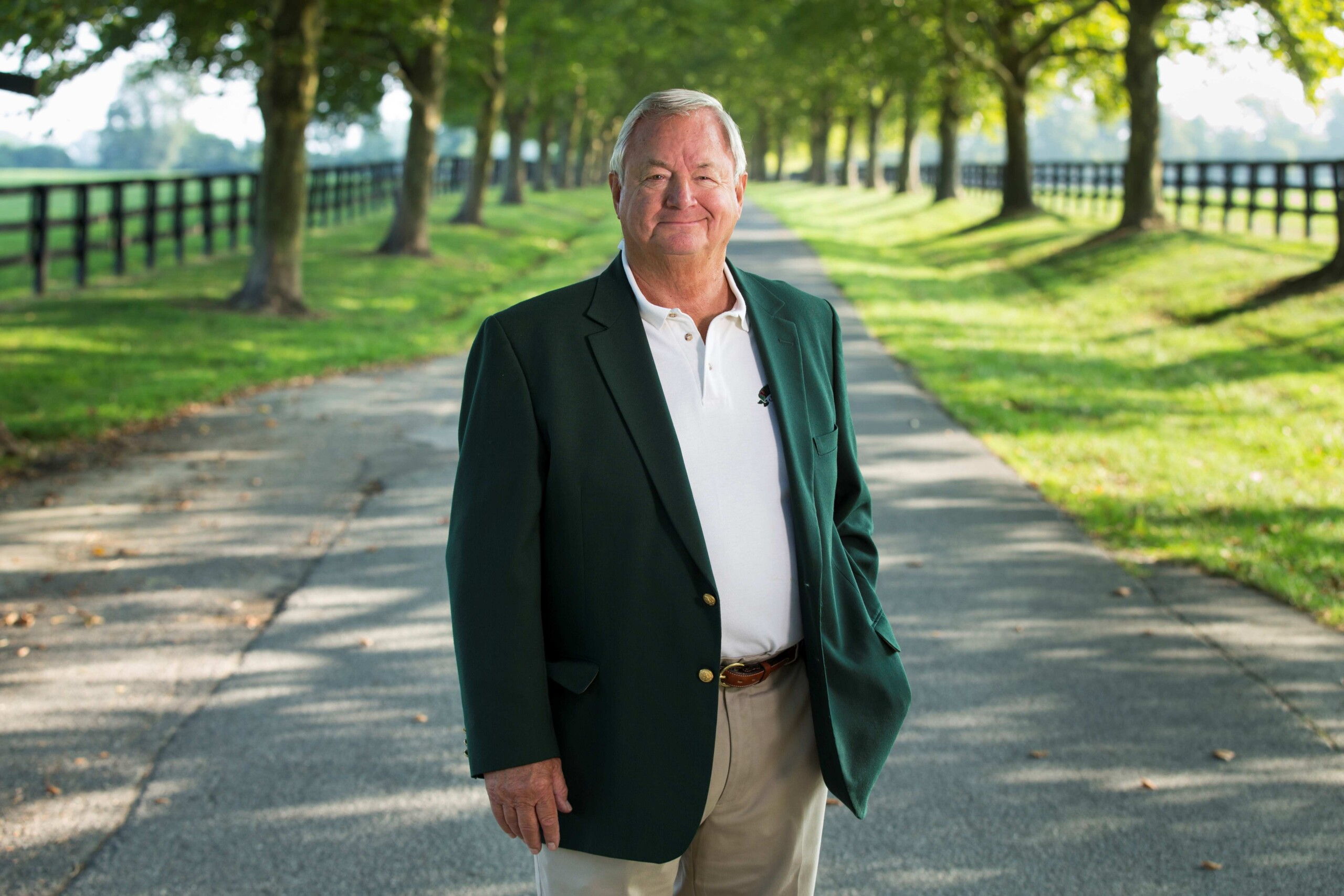
Winbak Farm owner Joe Thomson.
KENTUCKY BREEDER JIM AVRITT, SR. LOVES THE OSS
Kentucky-based breeder Jim Avritt, Sr. is similarly smitten with Ontario.
“It’s not just circumstance, I have a definite affinity for the program,” Avritt, Sr. said. “I really can’t tell you when I first started breeding in Ontario, but it was many, many, many years ago and it has treated me really well.
“It doesn’t cost an awful lot to race in it for one thing, and, of course, you have the Grassroots and the Prospect and the Gold. To me, it’s just ideal.”
Thirty years ago, Avritt, Sr. purchased a Canadian pacing mare named Dominique Semalu as a broodmare prospect and she became the foundation mare of his wildly-successful boutique breeding operation. Dominique Semalu produced Precious Beauty, dam of Pepsi North America Cup winner Sporstwriter and $800,000+ winner Precocious Beauty, the dam of $2 million U.S. Horse of the Year and Ontario-sired stallion Tall Dark Stranger. Precocious Beauty also produced Beautyonthebeach, the dam of current OSS star Crack Shot.
“If it hadn’t been for Dominque Semalu, probably nobody would have ever heard of me, especially through her daughter, Precious Beauty, who not only has a 2-year-old daughter racing, but she also has a 3-year-old grandson in Set Shot and a 3-year-old great grandson in Crack Shot.”
Avritt, Sr. has also raced in the OSS program, mostly through his long friendship with top Ontario trainer Gregg McNair.
More than 30 years ago, McNair purchased a yearling from Avritt, Sr. in Kentucky.
“I try to follow up on everything I sell,” Avritt, Sr. said. “I followed up on that horse and became acquainted with Gregg. Then, I had an Ontario eligible that I kept and gave to him, and it blossomed from there.”
CATTLEWASH’S BILL DONOVAN: OSS HAS TWO HUGE ADVANTAGES
The Ontario breed has been revitalized in recent years with the addition of several young stallions.
The Swedish owners of Green Manalishi S began standing the trotter at Tara Hills Stud in Port Perry, ON in 2021. Green Manalishi S is the leading trotting stallion in the OSS program with nearly $2 million in progeny earnings this year from his first two crops.
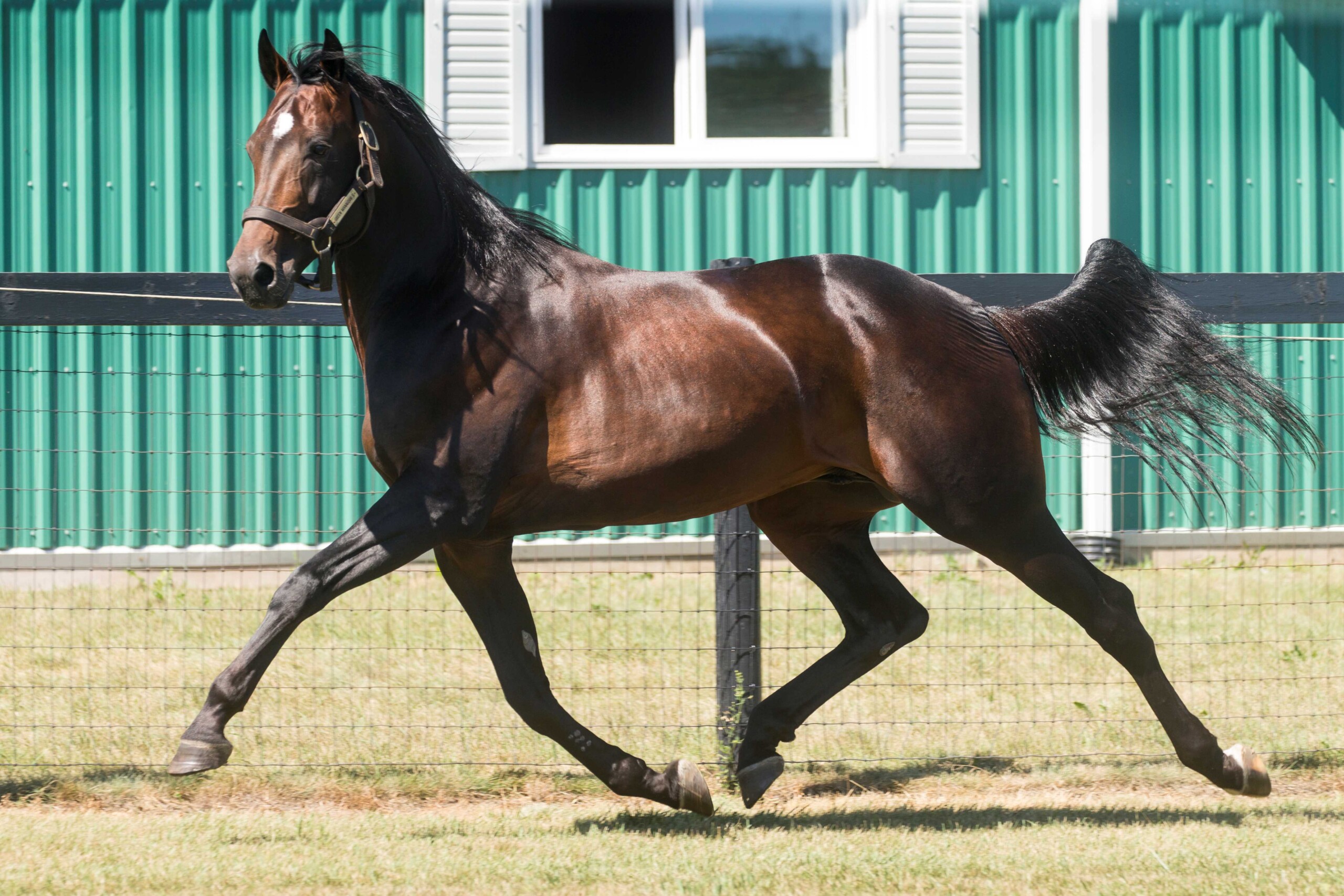
Leading OSS trotting stallion Green Manalishi S is standing at Tara Hills Stud in Port Perry, ON.
Tara Hills is also standing Cattlewash (top photo), the leading pacing stallion in the OSS with progeny earnings approaching $1.5 million. Those numbers are sure to increase with the lucrative Super Finals still to come this weekend (Oct. 10 and 11 at Woodbine Mohawk Park).
Cattlewash – the sire of undefeated 2-year-old millionaire Beau Jangles – is leading the provincial program despite the fact he only has 2-year-olds on the ground.
The son of the Ontario-sired legend Somebeachsomewhere, Cattlewash was bred and was originally owned by Boston native Bill Donovan before being syndicated. In 2021, Donovan both raced and bred Cattlewash to a small book of mares in New Jersey while deciding where to stand the winner of over $1.3 million when the pacer’s racing career was finished.
“I made the decision that Ontario was probably the best place for him, and I absolutely don’t regret that decision,” Donovan said. “I think it’s turned out to be the perfect place for him. I’m happy for the breeders and the owners up there that he’s there and that he’s had the success that he’s had. Hopefully, it continues.”
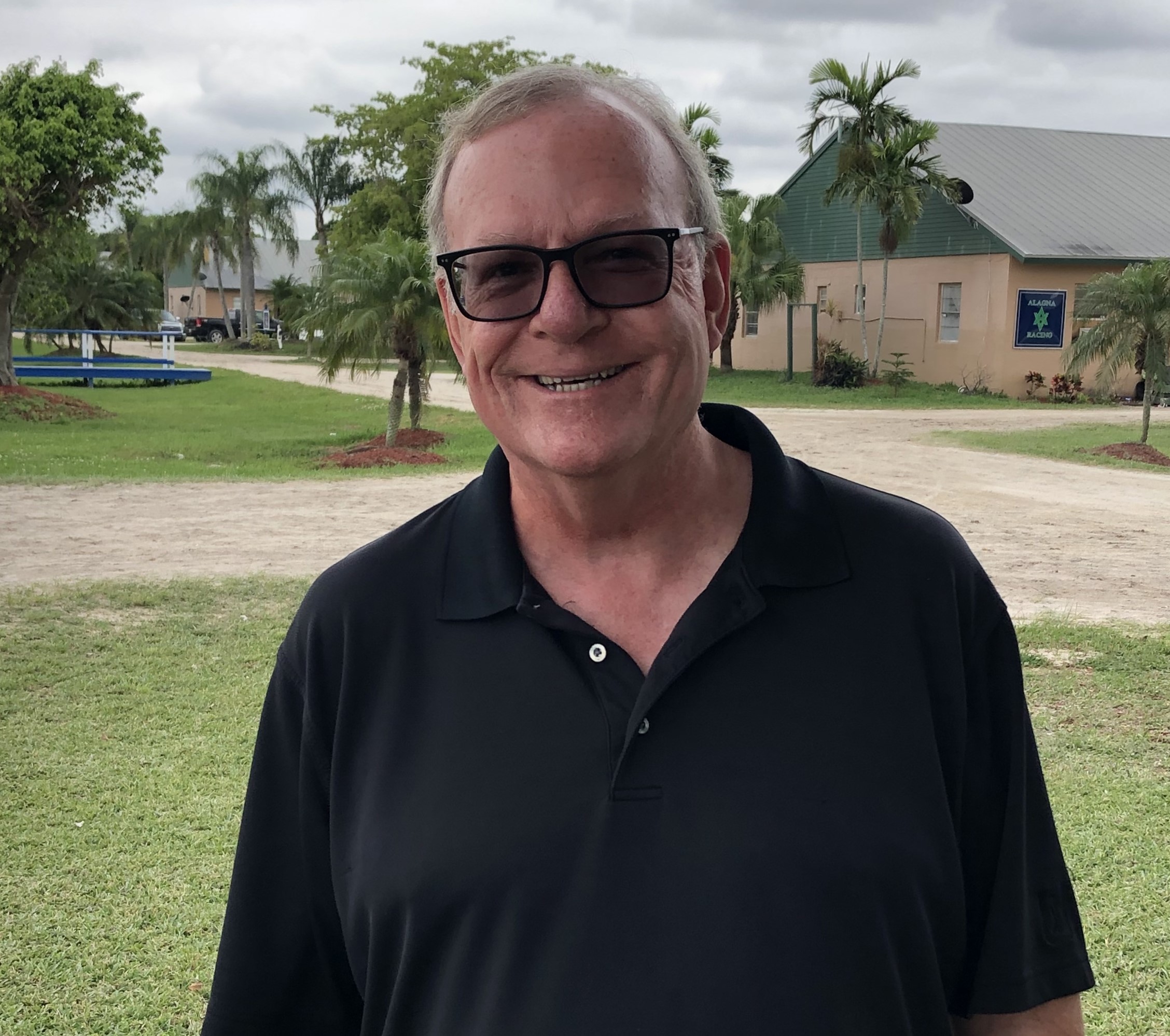
Bill Donovan, breeder and owner of Cattlewash. (Dave Briggs photo)
Donovan said he’s long loved the OSS program.
“For years, I’ve bought a few Ontario-brads each year,” Donovan said. “The program has two huge advantages in my view: You don’t need to leave the province – there’s your proof right there with Beau Jangles [who has never raced outside of Ontario] – and you can race the whole season and you don’t get killed with stakes nominations and fees.”
Historically, the OSS has had one of the lowest costs to entry when compared to other jurisdictional programs. It costs $100 to nominate a yearling to the OSS, $600 to sustain a 2-year-old to the program. Starting fees are $900 in the Gold Series, $400 in Grassroots and $100 in Prospect and there are no starting fees in year-end Finals and Consolations.
BULLDOG NIPPING AT CATTLEWASH’S HEELS
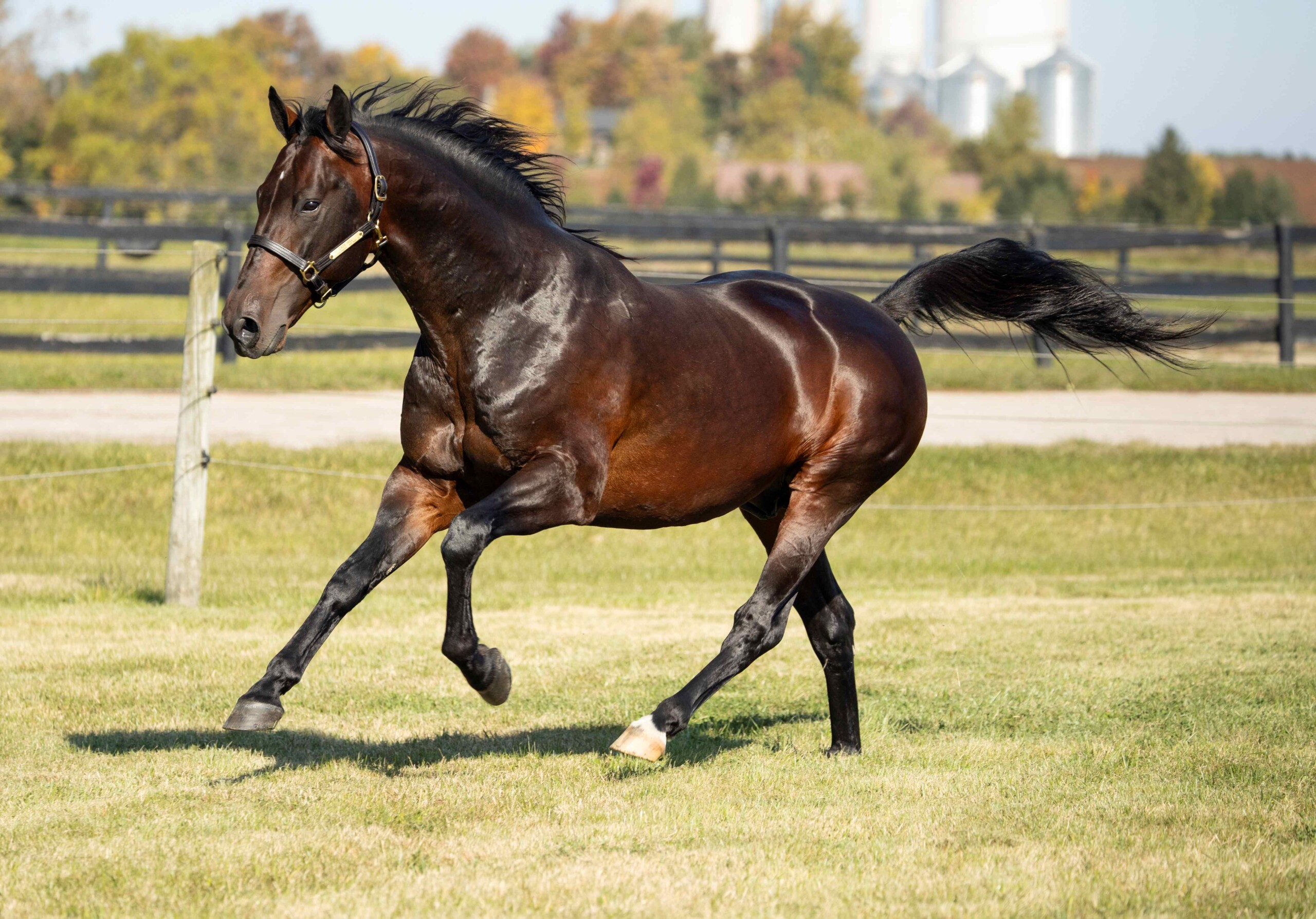
Pacing stallion Bulldog Hanover is standing at Seelster Farms in Lucan, ON.
Second in the pacing sire race is Ontario-sired Bulldog Hanover, the fastest standardbred in history. He, too, only has 2-year-olds racing, so far.
Bulldog Hanover, who stands at Seelster Farms in Lucan, ON, has OSS progeny earnings of some $1.2 million despite only having a small first crop racing. Bulldog Hanover’s first full commercial crop is selling this year at the Lexington Selected Yearling Sale, the London Classic Yearling Sale and the Standardbred Horse Sales Company auction in Harrisburg, PA.
The results of his first small racing crop have been so successful that Bulldog Hanover offspring were a hot item last week at the Lexington sale. Bulldog Hanover led all pacing sires with gross sales of just over $3.5 million for 45 yearlings sold, which means they averaged a price of nearly $78,000. Nearly half were purchased by U.S. owners.
“We’re really super excited,” said Karen Favacho, the farm manager at Seelster. “I think Bulldog and Cattlewash really set the pace for 2-year-olds this year. As far as percentage of starters, they’re both fairly equal, though Bulldog had a smaller crop than Cattlewash. So, I think from the quality of mares that [Bulldog Hanover] got his first year, he’s really showing that he’s going to make a great sire.
“The Ontario buyers, of course, will be interested in the Bulldogs, but we’re looking to make sure that he is looked at by the U.S. trainers as well. And so, I think if they don’t come up to Ontario very often, then I think being dual eligible [in Kentucky as well as Ontario] is good for him.
“The sky’s the limit for him, as far as the mares that he got last year or that are producing these yearlings this year, so we hope that continues.”
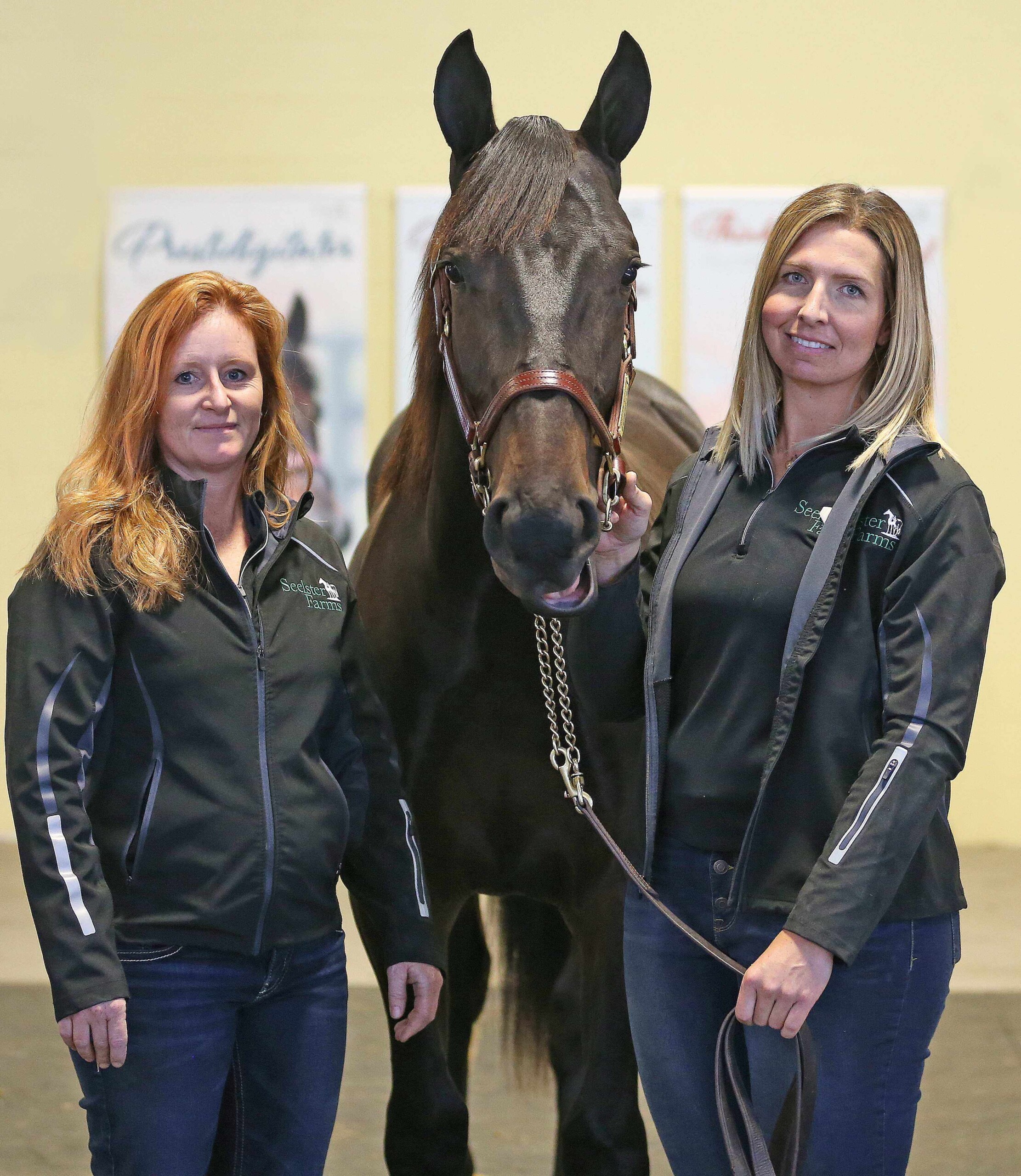
Seelster Farm manager Karen Favacho (right) and the farm’s veterinary technician Tina Marie Howard at a recent London Classic Yearling Sale. (Claus Andersen photo)
THE DARLING OF ONTARIO
Ontario trainer Jack Darling is the man that plucked Bulldog Hanover out of the 2019 yearling sale in Harrisburg for $28,000 and then campaigned the Ontario-sired son of Shadow Play to earnings of nearly $2.8 million and a breed-leading speed mark of 1:45.4. Darling and Bulldog Hanover’s co-owner Brad Grant then decided to stand the horse in Ontario.
“It’s so exciting for us in little Lucan, Ontario,” Favacho said. “We are just so happy that we had that connection with Jack [Darling] and with Brad [Grant] and that [Bulldog Hanover] stayed in Ontario. We tout his accomplishments all the time.”
Darling said he’s really pleased with what Bulldog Hanover has accomplished from a first crop that was around 50 foals. His first commercial crop of foals – the ones selling this year – numbered over 130.
“For the mares he bred, he’s done a really good job,” Darling said of that first select crop currently racing in the OSS program as 2-year-olds.
“You’re always hoping for the best, but you never know for sure who’s going to make a sire and who isn’t. But he just seems to be throwing all of his good points – the speed, the talent and he is such a smart horse. He had so much try to him and he didn’t get tired. He has that great breathing system, his lungs and everything.”
In fact, Darling said he is only planning to purchase Bulldog Hanover offspring this year to race.
Meanwhile, the trainer said he’s not surprised American buyers have taken to Bulldog Hanover.
“He’s the fastest horse in the world,” Darling said. “They want the best, and they’re going for it.”
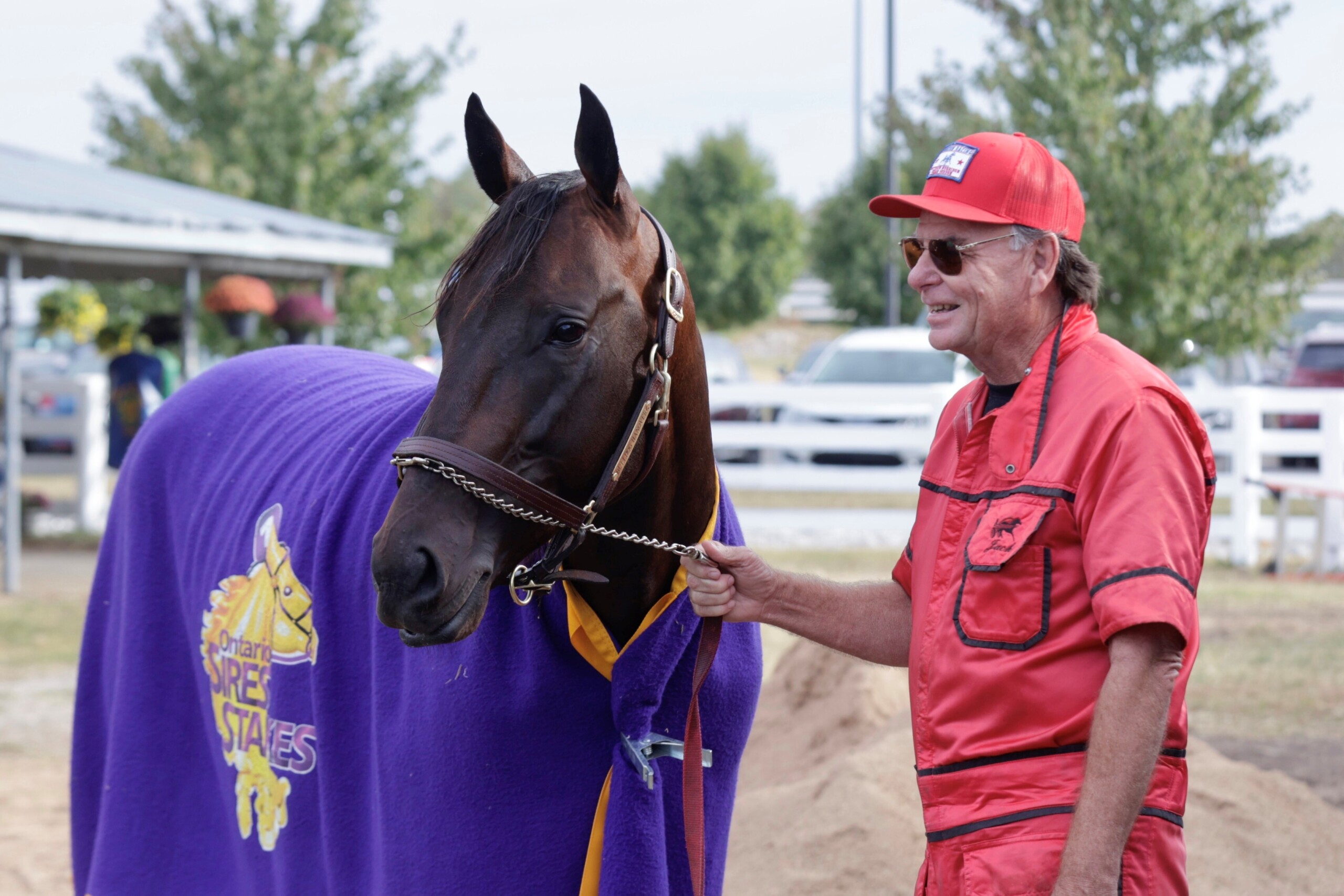
Jack Darling with Ontario-sired superstar Bulldog Hanover at The Red Mile in 2022.


